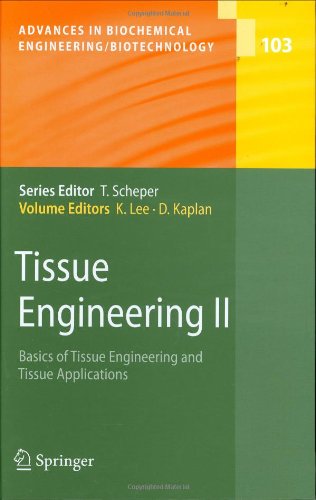

Most ebook files are in PDF format, so you can easily read them using various software such as Foxit Reader or directly on the Google Chrome browser.
Some ebook files are released by publishers in other formats such as .awz, .mobi, .epub, .fb2, etc. You may need to install specific software to read these formats on mobile/PC, such as Calibre.
Please read the tutorial at this link: https://ebookbell.com/faq
We offer FREE conversion to the popular formats you request; however, this may take some time. Therefore, right after payment, please email us, and we will try to provide the service as quickly as possible.
For some exceptional file formats or broken links (if any), please refrain from opening any disputes. Instead, email us first, and we will try to assist within a maximum of 6 hours.
EbookBell Team

4.3
38 reviewsIt is our pleasure to present this special volume on tissue engineering in the series Advances in Biochemical Engineering and Biotechnology. Thisvolume re?ects the emergence of tissue engineering as a core discipline of modern biomedical engineering, and recognizes the growing synergies between the technological developments in biotechnology and biomedicine. Along this vein, the focusof thisvolume istoprovide abiotechnology driven perspective on cell engineering fundamentals while highlighting their signi?cance in p- ducing functional tissues. Our aim is to present an overview of the state of the art of a selection of these technologies, punctuated with current applications in the research and development of cell-based therapies for human disease. To prepare this volume, we have solicited contributions from leaders and experts in their respective ?elds, ranging from biomaterials and bioreactors to gene delivery and metabolic engineering. Particular emphasis was placed on including reviews that discuss various aspects of the biochemical p- cesses underlying cell function, such as signaling, growth, differentiation, and communication. The reviews of research topics cover two main areas: cel- lar and non-cellular components and assembly; evaluation and optimization of tissue function; and integrated reactor or implant system development for research and clinical applications. Many of the reviews illustrate how bioche- cal engineering methods are used to produce and characterize novel materials (e. g. genetically engineered natural polymers, synthetic scaffolds with ce- type speci?c attachment sites or inductive factors), whose unique properties enable increased levels of control over tissue development and architecture.